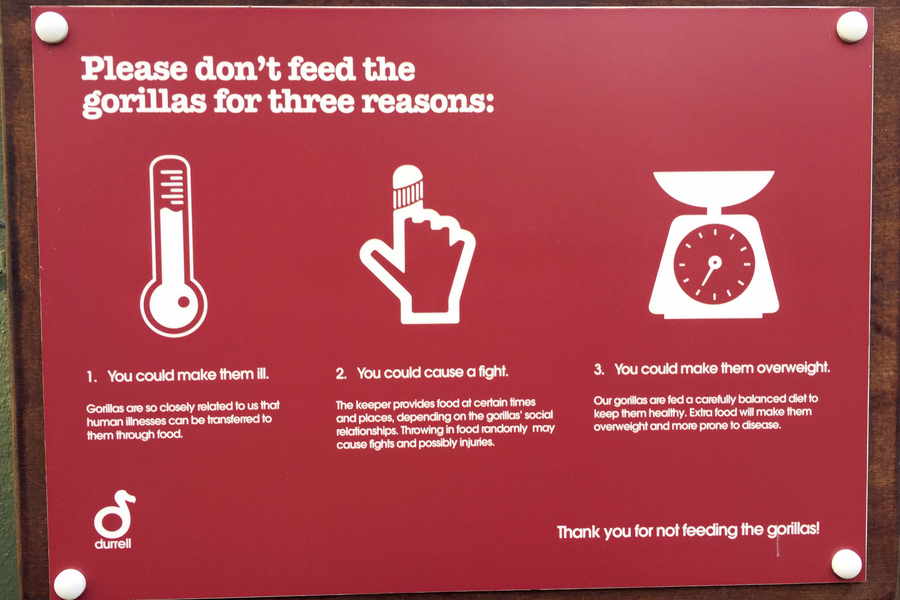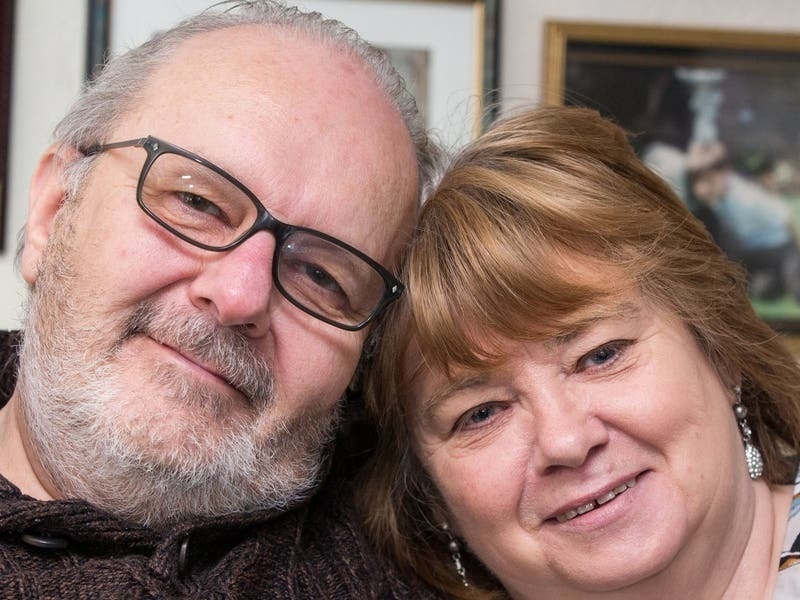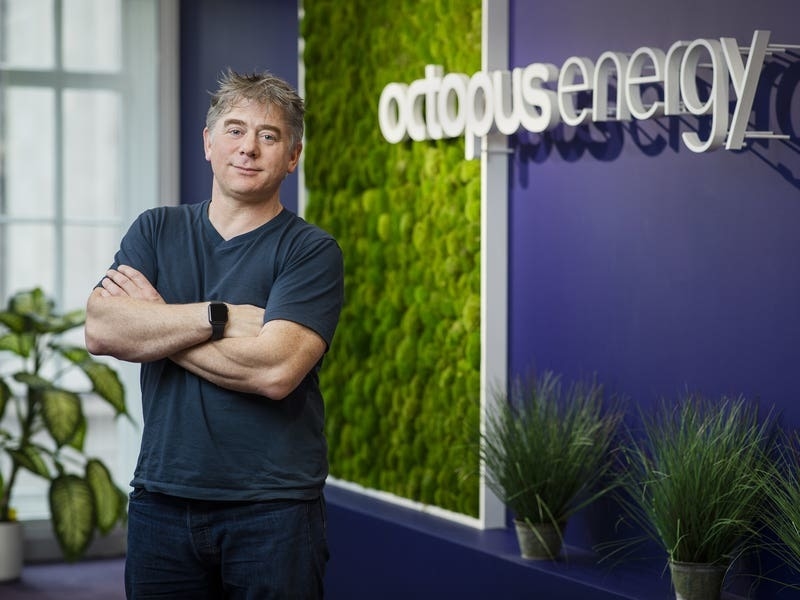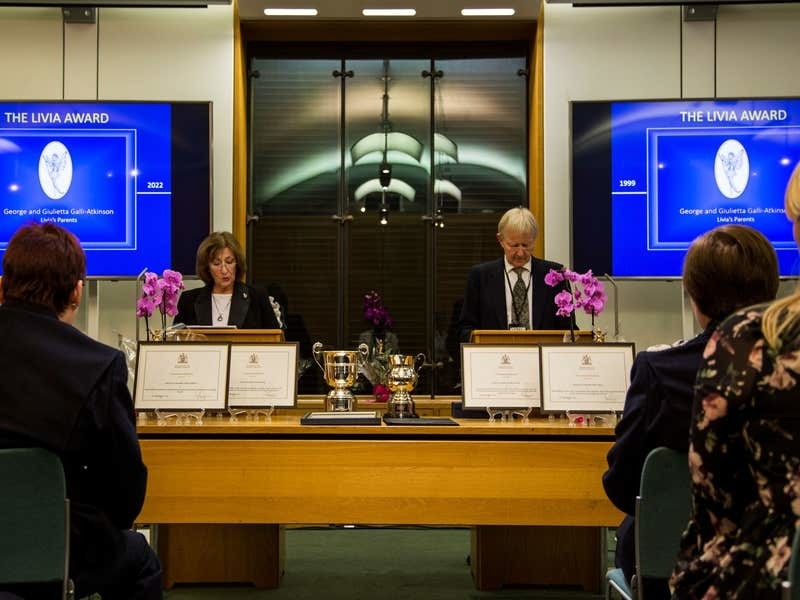Kishka (36) became ‘lethargic’ and ‘off her food’ after eating the cakes, which had been thrown into her enclosure by a couple who were visiting the park on Sunday.
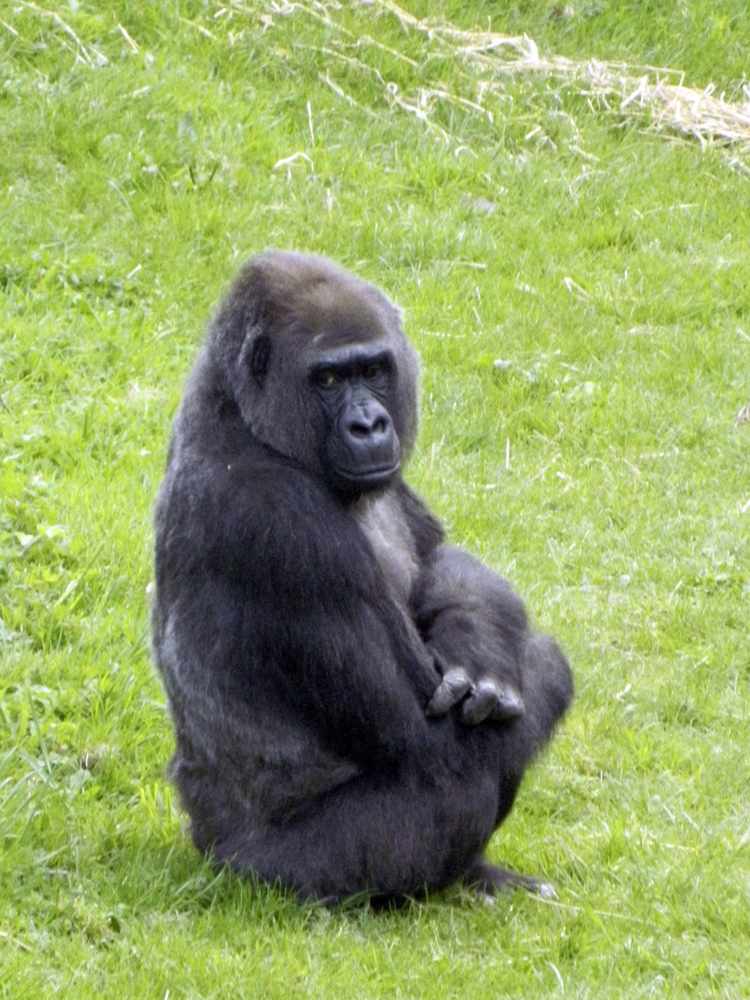
When approached by Durrell staff, the pair – who had brought four bags of rice crackers into the park – said they had thrown the food to get the animals’ attention so that they could take a photograph.
Although keepers say that Kishka has since recovered they are now urging people not to feed the animals.
Adam Bold, gorilla keeper, said throwing food into the enclosure could make the gorillas ill because they share 98 per cent of the same DNA as people and human illnesses can be transferred through food.
He added that feeding them could also lead to fights and make the gorillas overweight.
Mr Bold said: ‘Most people have common sense and know not to feed the animals.
‘This is a one-off but it could have led to grave consequences.’
- The gorilla is the largest of all the primates and are not deserving of their fierce King Kong image. [figure title=”5512994″ align=”none” id=”1577059″ align=”right”]
- They are traditionally found in Central African Republic, Equatorial Guinea, Gabon, Congo, Cabinda (enclave of Angola) and the extreme western tip of Zaire.
- Five different races or sub-species of gorilla are currently recognised, all of which face a severe threat of extinction in their native equatorial African habitat.
- The gruesome and growing illegal trade in gorilla bush meat and the all too common problem of habitat loss are the main reasons for the decline of these magnificent apes.
- Although gorillas have been kept in captivity for over 100 years, the first was not born until 1956.
- Since then a better understanding of their needs has led gorillas to live longer and breed more often thanks to improved diets, better mental and physical stimulation and the formation of stable social groups.
- Durrell has kept western lowland gorillas since 1959 the year it opened.
- The first to arrive at the park was two-year-old female Npongo, who died in 1999, aged 42.
- To date, 15 babies have been born at Durrell. Most are now at other zoos and continue to make a valuable contribution to the breeding programme for their highly endangered species.
Source: durrell.org
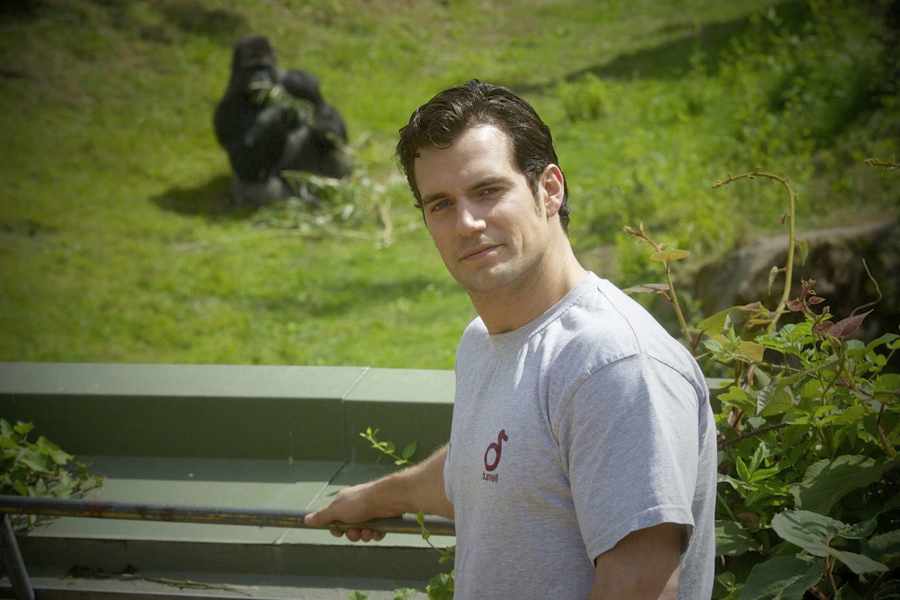
- In August last year Jerseys Man of Steel, Henry Cavill, became a Durrell ambassador, in a bid to raise awareness of the wildlife park and the importance.
- On a visit to the Island, he swapped his Superman cape for a Durrell t-shirt as he took a tour of the park.
- Speaking to the JEP at the time, he said: Im here to raise awareness of the Durrell conservation effort worldwide. This is a place that is very close to my heart – I used to come here as a boy, and now that I can help to raise peoples awareness of Durrell, I thought I would make the effort.
- Reflecting on childhood visits to the attraction, he said: I used to come here so often. I remember playing here with my brother. Being around the gorilla enclosure is a particular memory.
- Lee Durrell, the parks honorary director and wife of the late Gerald Durrell, said: To use the words ambassador and Henry Cavill in one sentence is brilliant. I hope with his being spokesman it will bring the name of Durrell and our mission to the attention of people all round the world.

